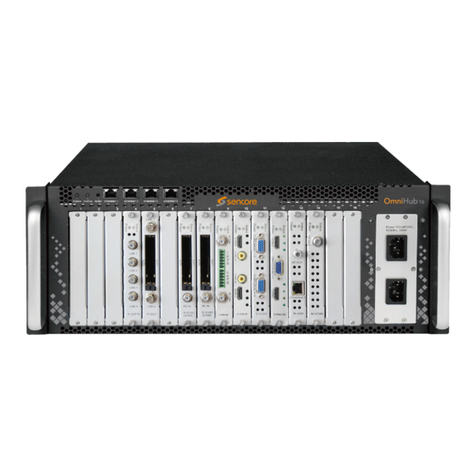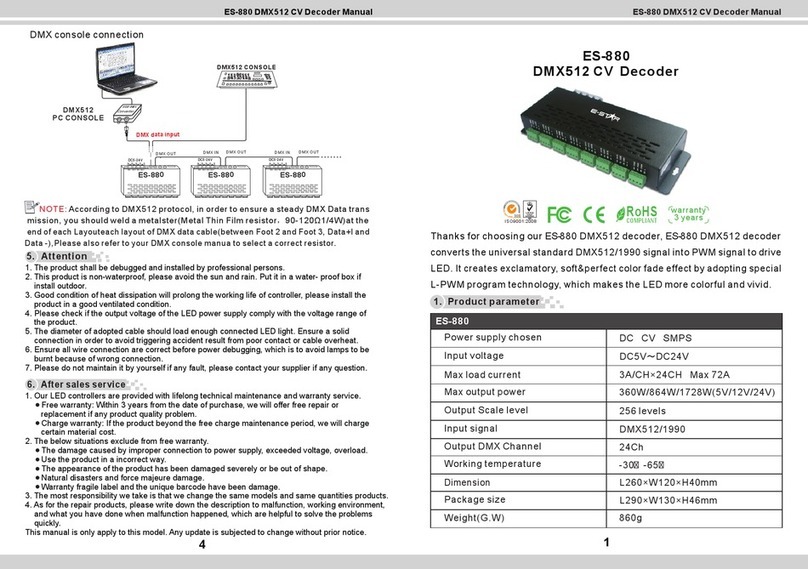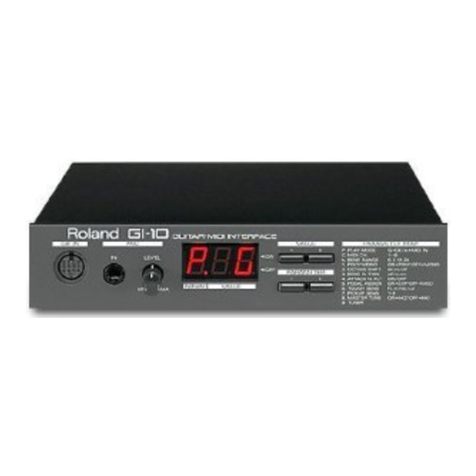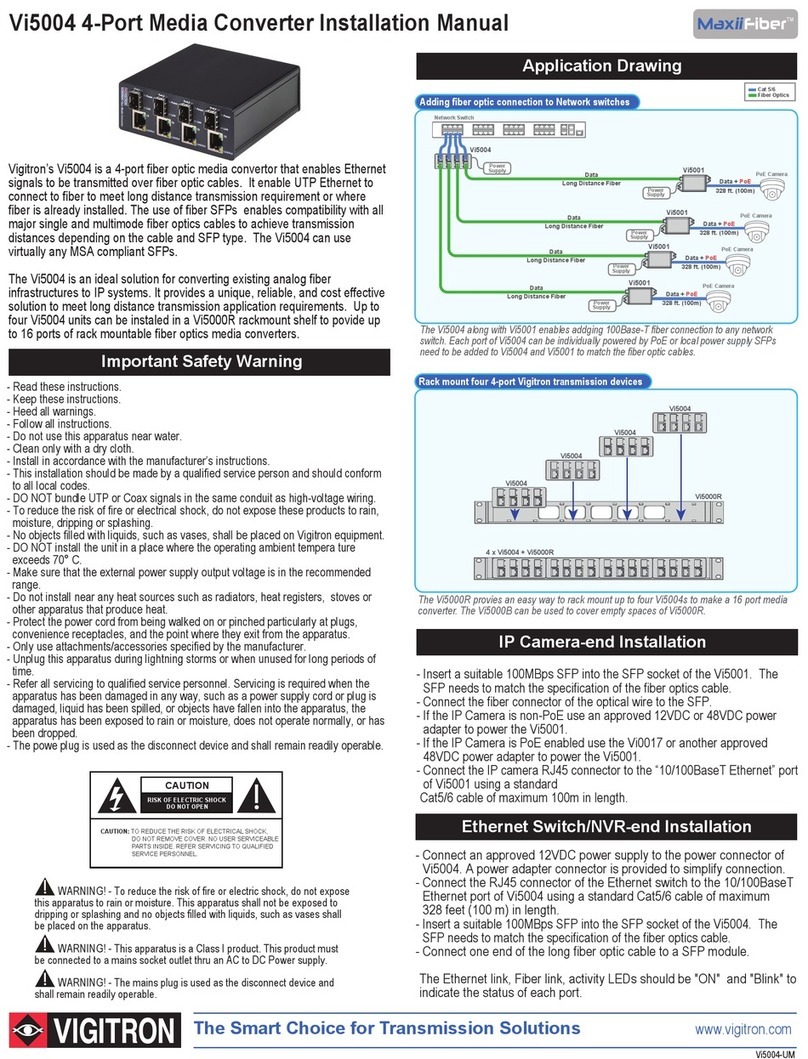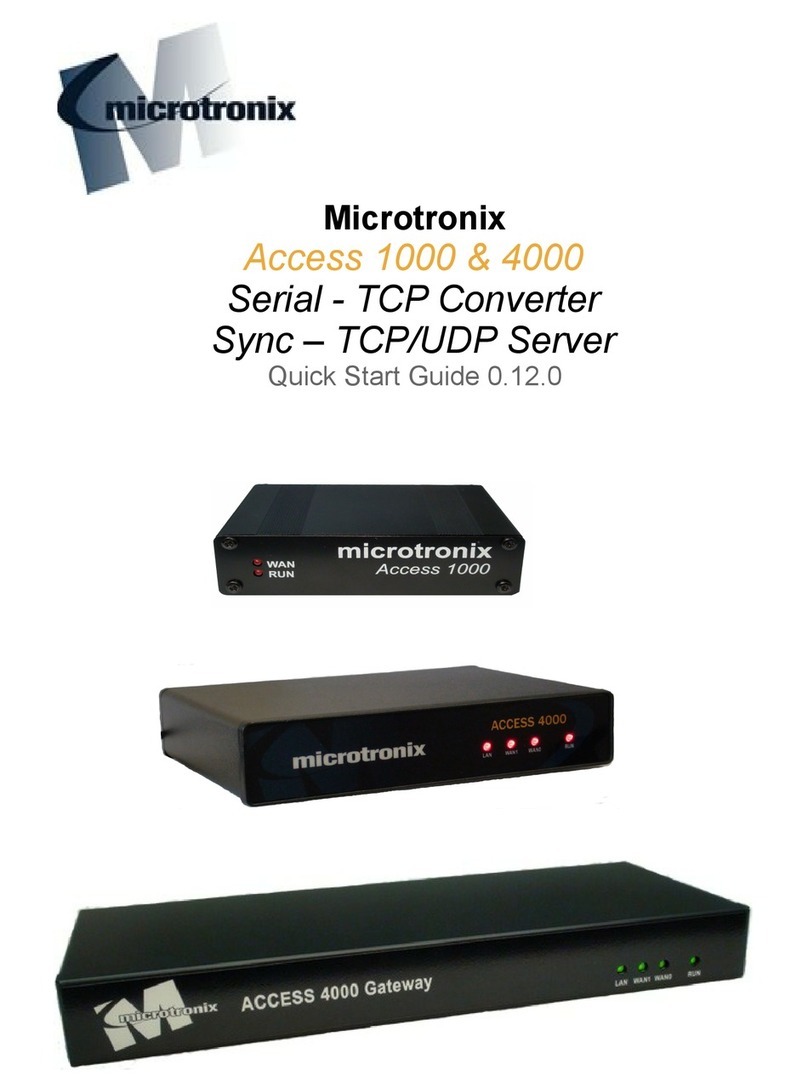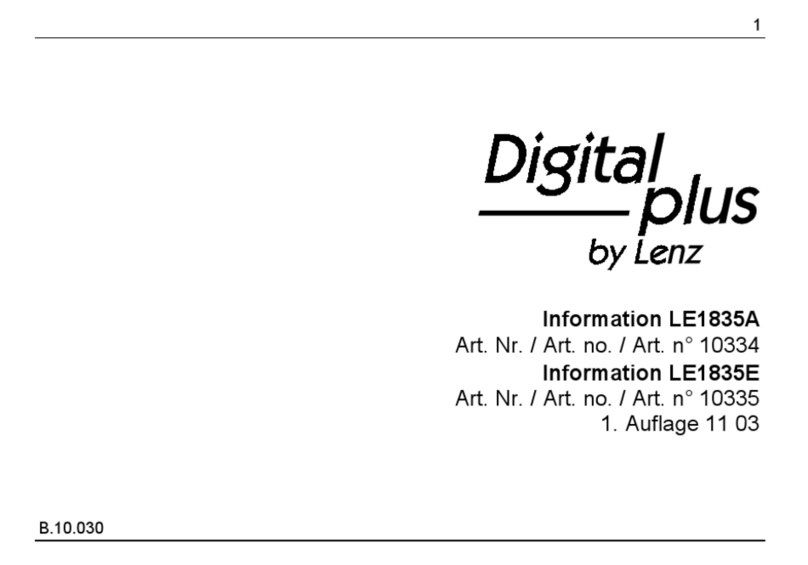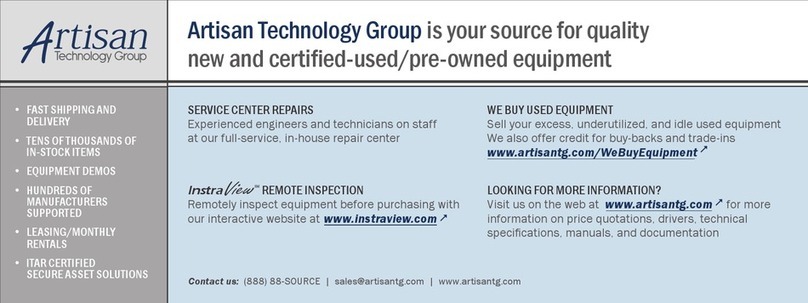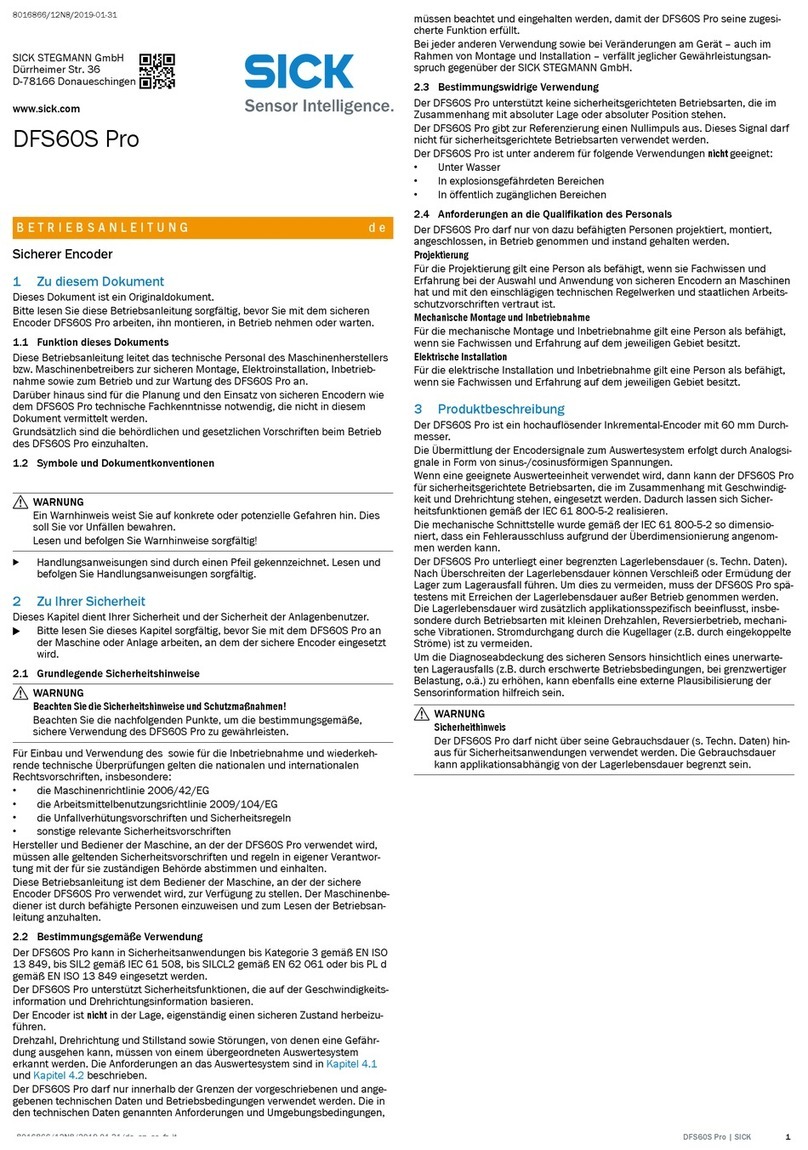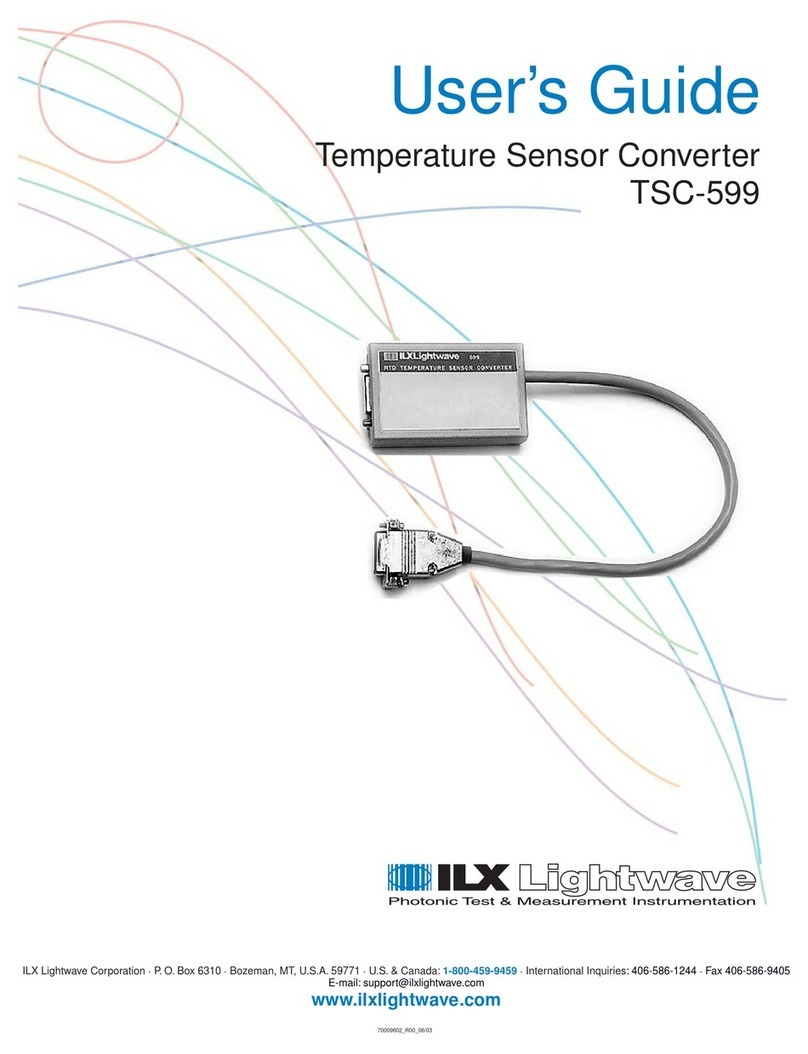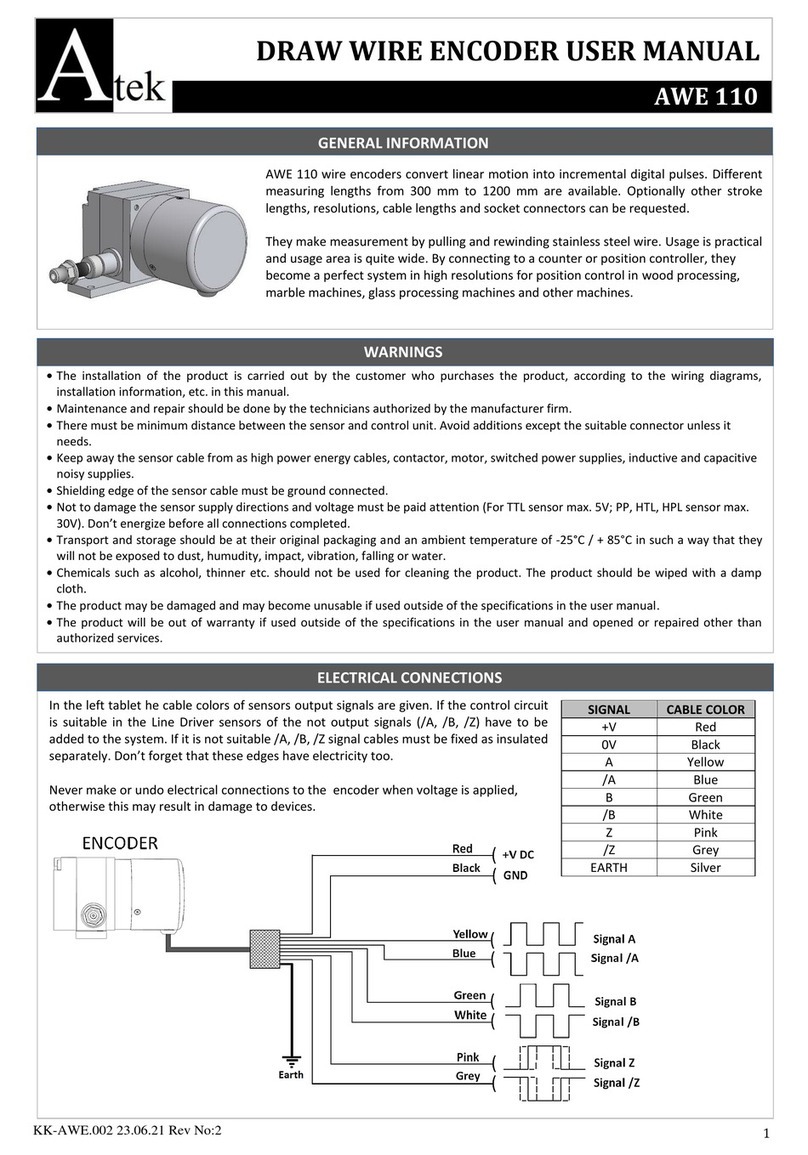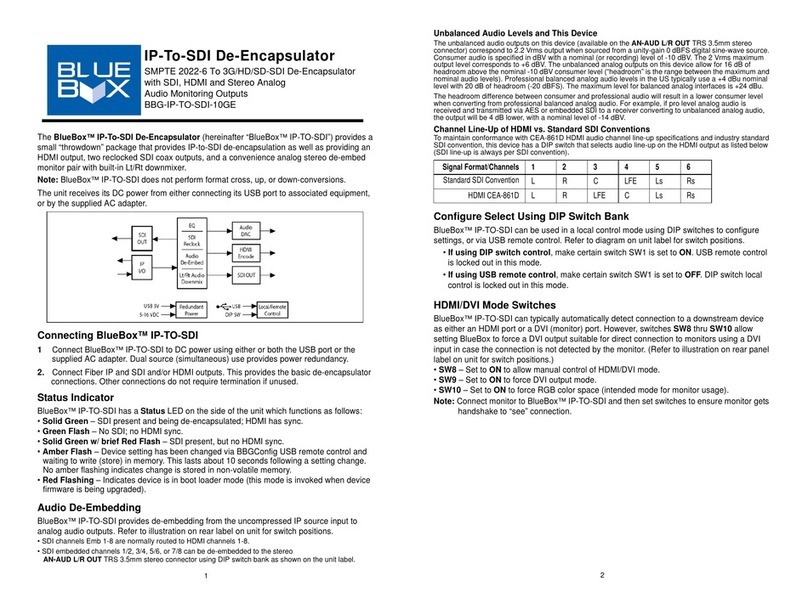Kortho HQCD-100 User manual

KORTHO Hot Quick Coder Manual 1
KORTHO-D
HOT QUICK CODER
HQCD-09146
MODEL SHOWN: HQCD-100
WITH MOUNTING BRACKETASSEMBLY
MODEL SHOWN: HQCD-100
WITH HOT QUICK CODER BENCH MOUNT STAND - 12” X 18”
OWNER’S MANUAL
INSTALLATION - OPERATION - MAINTENANCE
AMERICANMARKING,INC.AMERICANMARKING,INC.
BIRMINGHAM
CORPORATE OFFICE:
VOICE: 800.964.6275
FAX: 205.733.1720
CHATTANOOGA
REGIONALSALESOFFICE:
VOICE: 800.685.6275
FAX: 423.843.0535
2435 VALE DRIVE
BIRMINGHAM, AL 35244
www.americanmarking.com
MARKING, INC.AMERICAN
MARKING, INC.AMERICAN

KORTHO Hot Quick Coder Manual 2
TABLE OF CONTENTS
Preface
Specifications
HQCD-100
1. General Instructions Before Use
Liability
Life Span
Intended Use
Environment
OperationalPersonnel
2. General Introduction
The Hot Quick Coder
The Control Box
The Control Panel
The SupportArm
3. Safe Use
General Safety Measures
Explanation of attached Stickers
4. Installation Of The Hot Quick Coder
Assembly instructions
Connection instructions
Requirements
5. Preparing the Hot Quick Coder
Applying the Text Material
Adjusting the Position of the Hot Quick Coder
Preparation for use
6. Operation of the Hot Quick Coder
Powering up
Printer Mode
Parameter / Message Screens
7. The Hot Quick Coder During Use
Changing the Type holder
Replacing the Ink Roll
8. Deactivating The Hot Quick Coder
Stopping printing for a short time
Stopping printing for a longer time
9. Maintenance And Cleaning
Maintenance
Cleaning
10. Print Quality Problems
Type holder does not move
Type holder moves but no print or only partial print visible
Printing too thick
The Type holder is not heating up
11. Technical Data
Technical Data Hot Quick Coder
Technical Data Control Box for the Hot Quick Coder
12. Connection Diagrams
Control Box Electrical Connection Diagram
Signal Device: Checking Wiring Connection
Setting the Hot Quick Coder to the correct mains voltage (110/220V)
13. Troubleshooting
14. Parts Lists, & Diagrams
○○○○○○○○○○○○○○○○○○○○○○○○○○○○○○○○○○○○○○○○○○○○○○○○○○○○○
○○○○○○○○○○○○○○○○○○○○○○○○○○○○○○○○○○○○○○○○○○○○○○○○○○○○○○○○○○
○○○○○○○○○○○○○○○○○○○○○○○○○○○○○○○○○○○○○○○○○○○○○○○○○○○○○○○
○○○○○○○○○○○○○○○○○○○○○○○○○○○○○○○○○○○○○○○○○○○○○○○○○○○○○
○○○○○○○○○○○○○○○○○○○○○○○○○○○○○○○○○○○○○○○○○○○○○○○○○○○
○○○○○○○○○○○○○○○○○○○○○○○○○○○○○○○○○○○○○○○○○○○○○○○○○○○○
○○○○○○○○○○○○○○○○○○○○○○○○○○○○○○○○○○○○○○○○○○○○○○
○○○○○○○○○○○○○○○○○○○○○○○○○○○○○○○○○○○○○○○○○○○○○○○
○○○○○○○○○○○○○○○○○○○○○○○○○○○○○○○○○○○○○○○○○○○○○○○○○○
○○○○○○○○○○○○○○○○○○○○○○○○○○○○○○○○○○○○○○○○○○○○○○○○○
○○○○○○○○○○○○○○○○○○○○○○○○○○○○○○○○○○○○○○○○○○○○○○○○○
○○○○○○○○○○○○○○○○○○○○○○○○○○○○○○○○○○○○○○○○○○○○
○○○○○○○○○○○○○○○○○○○○○○○○○○○○○○○○○○○○○○○○○
○○○○○○○○○○○○○○○○○○○○○○○○○○○○○○○○○○○○○○○○○○○○○○○
○○○○○○○○○○○○○○○○○○○○○○○○○○○○○○○○○○○○○○○○○○○○○○
○○○○○○○○○○○○○○○○○○○○○○○○○○○○○○○○○○○○○○○○○○○○○○○○○○○
○○○○○○○○○○○○○○○○○○○○○○○○○○○○○○○○○○○○○○○○○○○○
○○○○○○○○○○○○○○○○○○○○○○○○○○○○○○○○○○
○○○○○○○○○○○○○○○○○○○○○○○○○○○○○○○○○○○○○○○○○○○○○○○○
○○○○○○○○○○○○○○○○○○○○○○○○○○○○○○○○○○○○○○○○○○○○○○○○○○○
○○○○○○○○○○○○○○○○○○○○○○○○○○○○○○○○○○○○○○○○○○○○○○○○○○○○
○○○○○○○○○○○○○○○○○○○○○○○○○○○○○○○○○○○○○○○○○○
○○○○○○○○○○○○○○○○○○○○○○○○○○○○○○○○○○○○○○○○○○○○○○○○○○○
○○○○○○○○○○○○○○○○○○○○○○○○○○○○○○○○○○○○○○○○○○
○○○○○○○○○○○○○○○○○○○○○○○○○○○○○○○○○○○○○○○○○○○○○
○○○○○○○○○○○○○○○○○○○○○○○○○○○○○○○○○○○○○○○○○○○○○○○
○○○○○○○○○○○○○○○○○○○○○○○○○○○○○○○○○○○○○○○○○
○○○○○○○○○○○○○○○○○○○○○○○○○○○○○○○○○○○○○○○○
○○○○○○○○○○○○○○○○○○○○○○○○○○○○○○○○○○○○○○○○○○○○○○○○○○○
○○○○○○○○○○○○○○○○○○○○○○○○○○○○○○○○○○○○○○○○○○○○○○○○○○○○○○
○○○○○○○○○○○○○○○○○○○○○○○○○○○○○○○○○○○○○○○○○○○○
○○○○○○○○○○○○○○○○○○○○○○○○○○○○
○○○○○○○○○○○○○○○○○○○○○○○○○○○○○○○○○○○○○○○○○○○○○○○○○○
○○○○○○○○○○○○○○○○○○○○○○○○○○○○○○○○○○○○○○○○○
○○○○○○○○○○○○○○○○○○○○○○○○○○○○○○○○○○○○○○○○○
○○○○○○○○○○○○○○○○○○○○○○○○○○○○○○
○○○○○○○○○○○○○○○○○○○○○○○○○○○○○○○○○○○
○○○○○○○○○○○○○○○○○○○○○○○○○○○○○○○○○○
○○○○○○○○○○○○○○○○○○○○○
○○○○○○○○○○○○○○○○○○○○○○○○○○○○○○○○○○○○○○○○○○○○○○○
○○○○○○○○○○○○○○○○○○○○○○○○○○○○○○○○○○○○○○○○○○
3
4
5
5
5
5
5
6
6
7
8
9
10
11
11
12
13
13
14
15
16
17
21
21
22
22
23
23
24
24
25
25
26
26
27
28
28
29
31

KORTHO Hot Quick Coder Manual 3
The Kortho Hot Quick Coder can be used on almost any material and surface. Whether you make 10,000 or
100,000 prints a day, the Kortho Hot Quick Coder offers the perfect solution for a variety of coding applications.
The unit accommodates up to three lines of text in a maximum printing area of 12 x 24 mm. The unique spring-
loaded jumping head, with its “butterfly touch”, allows you to make perfect prints on moving products.
The Kortho Hot Quick Coder utilizes hot ink technology to provide clean, sharp, nearly instant dry impressions at
a high rate of speed. Ink rolls, which are dry to the touch at room temperature, are preheated prior to use in the
self-contained heating system. When hot, the ink in the roll becomes fluid and is then ready for operation. During
production, a spare roll can be stored in the unit’s preheat chamber to keep it ready for immediate use. Ink rolls
are available in black, white, red, yellow, green & blue and are supplied in convenient six-pack boxes.
PREFACE
The specification section includes a drawing of the Hot Quick Coder with the basic dimensions, the net weight,
print area, max printing & product speed, electrical specifications & working pressure.
CODER SPECIFICATIONS

KORTHO Hot Quick Coder Manual 4
KORTHO HQCD-100 HOT QUICK CODER
SPECIFICATIONS
7.404”
5.512”
0.175”DIA.
4 MOUNTING HOLES
11.558”
8.951”
4.21”
11.83”
13.87”
7.28”
.50”
.99”
3.64”
3.58”
(MOUNTING
HOLES)
.95”
(294 mm)
(227 mm)
(107 mm)
(188 mm)
(140 mm)
(4.45 mm)
(300 mm)
(352 mm)
(6.4 mm)
(91 mm)
(92 mm)
(25 mm)
(24 mm) (6.4 mm)
PrintArea: 0.472” X 0.945” - (12 x 24 mm)
Printing Speed Max: 300 Prints/min.
Product Speed Max: 196 Ft./min. - (60m/min.)
Electrical: 110-130 VAC/1 A.
Electrical: 220-240 VAC/0.5 A.
Working Pressure: 56 PSI - (4 bar) Coder Weight: 3.75 Lbs. - (1.7 Kg,)
Control Weight: 4.41 Lbs. - (2 Kg.)
7.677”
(195 mm)
STARTSTOP
Hot Quickcoder
TEST
BAR
0
2
46
8
10

KORTHO Hot Quick Coder Manual 5
1 - GENERAL INSTRUCTIONS BEFORE USE
Pay particular attention to all stated warnings!
1.1 Liability
KORTHO accepts no liability for damage resulting from the improper or uninformed use of the equipment or caused by
maintenance or other work being carried out improperly. They also accept no liability for the normal wear-and-tear of the
product.
1.2 Life Span
The life span of the equipment is five years with normal use and compliance with the indicated maintenance periods.The life
spancanbenegatively influencedbyimproper/uninformeduseoftheequipmentorimpropermaintenance,repairormodification.
No claims for guarantee or compensation for damages will be accepted in such instances. The Hot Quick Coder does not
contain any harmful substances or materials and can be scrapped or recycled at the end of its life span. The Ink Rolls should
be treated as small chemical waste.
N.B. The above statement is based on the legislation in force as at mid 1995.
1.3 Intended Use
The Hot Quickcoder-D printers are industrial printers and are designed to print directly on substrates.
Normal use means use under normal conditions as described in this manual.
The printer may not be used in areas, which have a fire or explosion hazard.
1.4 Environment
The environment in which the Hot Quick Coder may be installed must comply with a number of requirements relating to
humidity, temperature and vibrations.
The relative humidity should be between 10 and 90% (non-condensing).
The ambient temperature should be between 41 and 113°F.
The Hot Quick Coder may not be used in any areas having a fire or explosion hazard.
The Hot Quick Coder should be installed in a low vibration location.
1.5 Operational Personnel
The KORTHO, Hot Quick Coder was manufactured to exacting standards and every available step has been taken to assure
yourcompletesatisfaction. It is most important,however,thattheinstructionscontainedin this manual are read and carefully
followed for best results. Failure to do so may result in unsatisfactory performance, damage to the equipment and personal
injury. Readthroughthisuser’s manual carefullybeforeputtingtheHotQuickCoderintouseforthefirst time. Follow the order
indicated precisely when carrying out any of the actions described in this manual.
Operators are qualified when they have read and understand this manual.Aspecific preliminary training is not required.
Technicians that carry out repairs and technical maintenance on the printer equipment should have secondary technical
education or comparable technical level of knowledge through practical experience.
Installation or servicing of the printer must only performed by qualified personnel of Korthofah BV or a local distributor,
which is designated by Korthofah BV. For customer installations authorisation must be obtained from Korthofah BV or a
local distributor, which is designated by Korthofah BV.

KORTHO Hot Quick Coder Manual 6
2 - GENERAL INTRODUCTION
The HotQuick Coder(henceforth HQC) hasbeendeveloped to apply small textsofoneto three lines (max. line length 25 mm)
on a production line. The applications vary from loose products to a continuous product (e.g. packaging film).
2.1 The Hot Quick Coder
1 Preheating
2 Ink Roll
3 Type holder
The code to be printed is applied to an exchangeable type
holderviatextcharactersorblocks.Thetypeholderisinked
with a Ink Roll which only delivers the inked (wax-based) at
high temperature. The Ink Roll is kept at temperature in the
heating ring of the HQC.
2.2 The Control box
A good print quality is achieved with a correct combination of stamping time, stamping pressure, temperature of the type
holder and the setting of any counter-pressure plate.
The text can be applied to a stationary or a moving product. The maximum permitted product speed is 195 Feet/min. approx.
250 impressions per minute can be produced.
! WARNING:
Afterusing the HQC, it cannot simply bedeactivated. Forthecorrectprocedurereadsection8 “Deactivating the Hot Quick
Coder”
1. Control box
2. Control panel
3. Stop Key
4. LCD display
5. Cursor keypad (up, down, left, right)
6. Start key
7. Test key
8. Strain relief
9. Strain relief
10. Printer connection
11. Supply connection
12. Power cord
13. Power switch
14. Printer fitting
15. Air gauge
16. Supply pressure fitting
17. Air regulator
1234
5
6
7
8
9
1011
12
13
14
15
16
17
BAR
0
2
46
8
10

KORTHO Hot Quick Coder Manual 7
The cursor keys positioned below the LCD display on the control panel are used to navigate through the control box’s
screen menus. While in stop-mode the arrow down key (HEAD OUT) fixes the type holder in the outer most postion. The
arrow up key (HEAD IN) moves the type holder back into neutral position.
Three command keys, STOP, START and TEST are provided.
The STOP key sets the printer in the stop-mode. In stop-mode the printing is stopped and “STOP” is displayed on the
LCD-display.
The START key sets the printer in run-mode and “RUN” is displayed on the LCD-display. The printer now accepts trigger
pulses from the host machine, if the alarm is not set.
The TEST key is only enabled in stop-mode. Press this key to make one test print. Atest print will only be made if the
alarm signal is not set.
The Control box contains a Control Panel with which specific functions can be performed such as switching the HQC on and
off and setting the print parameters. The Control Panel can also be used to issue a test print signal.
2.3 The Control Panel
2.2.1 Print Cycle
The purpose of the printer is to print an image on a substrate.
The print cycle is initiated with a trigger signal. This trigger must be generated by a host machine or a photocell, which
detects the product or special mark on the substrate.
2.2.2 User Interface
The user interface consists of two parts, the control panel and the menu structure of operator menus.
TEST
START
STOP
Hot Quickcoder
BAR
0
2
46
8
10
2.3.1 Indicator Icons
The Indicator icons on the LCD display, are provided to show the status:
Œ
‹
‰
T-icon: Indicates that the trigger input is set. And in RUN mode the print cycle will start.
P-icon: Indicates that the printer is printing.
H-icon:Indicates that the heating elements are switched on. This icon is flashing until the set temperature is reached.

KORTHO Hot Quick Coder Manual 8
2.4 The support arm
1 Support arm
2 Counter-pressure plate
The support arm is used to position the HQC and any counter-pressure plate in relation to the product to be printed.
The support arm is suitable for moving the HQC to any position.
The exceptionally short stamping time makes it possible to print directly onto a moving product without further
modifications.

KORTHO Hot Quick Coder Manual 9
3 - SAFETY USE
3.1 General Safety Measures
This product is designed to conform to all current directives, and their relevant harmonized standards, of the European
Council. It is important that the precautions indicated in this manual are strickly followed.
CE Machinery Directive (98/37/EC)
EN 292-1:1991 Safety of machinery - Basic concepts, general principles for design - Part 1 :Basic terminology, methodol-
ogy.
EN 292-2:1991EN 292-2/A1:1995 Safety of machinery - Basic concepts, general principles for design - Part 2 :Technical
principles and specifications (withAmendment 1).
EMC Directive (89/336/EEC)
EN 55022 :1998EN 55022/A1:2000EN 55022/A2:2003Information Technology Equipment - Radio disturbance characteris-
tics. Limits and methods of measurement (withAmendment 1).
EN 55024 :1998
EN55024/A1:2001
EN 55024/A2:2003 Information Technology Equipment - Immunity characteristics. Limits and methods of measurement
(withAmendment 1).
EN 61000-3-2:2000 Electromagnetic compatibility.
(EMC) - Part 3-2: Limits - Limits for harmonic current emissions (equipment input current up to and including 16Aper
phase)(withAmendments 1 and 2).
EN 61000-3-3:1995EN 61000-3-3/A1:2001 Electromagnetic compatibility.
(EMC) - Part 3-3: Limitation of voltage changes, voltage fluctuations and flicker in public low-voltage supply systems for
equipment with rated current 16Aper phase and not subject to conditional connection
Low Voltage Directive (72/23/EEC)
EN 60950-1:2000 Safety of information technology equipment
3.1.1 Power supply
For safe operation, the power cable to the control box must be connected to a properly grounded single-phase supply of
the appropriate voltage. The power supply must comply with the power supply information that is written on the serial-
number label (located on the back of the control box.
Verify that no significant potential difference exists between the single-phase ground supply of the printer and the frame
ground of the host machine.
Note:
All external equipment that is connected to the control box interface must be double insulated to qualify the whole
installation as a separated extra-low voltage (SELV, Class II) system.
The wire colour code for the supply cable is: BROWN for Line (L)
BLUE for Neutral(N)
GREEN/YELLOW for Protective Earth (PE)
When installing or servicing the equipment ensure that the host machine is stopped.
~ 220 / 240 V
~ 110 / 130 V
50 / 60 Hz

KORTHO Hot Quick Coder Manual 10
3.2 Explanation of attached stickers
Various warning symbols are attached to the Hot Quick Coder.
Here is an explanation of the symbols on the stickers.
General danger Danger due to
high voltage parts
Danger due to
high temperature
Coding unit remains hot
for awhile after use
3.1.2 Precautions before power-up
Check at every printer power-up if all these connections are secured:
1. The mains power plug. (X1).
2. The printer cable. (X2).
3. The cable/conduit (X3/X4) between the control box and the coding unit.
3.1.3 Precautions when opening the control box
3.1.4 Anti-static precautions
The printed circuit boards are static sensitive devices, which can be damaged if they are touched without the necessary
electrostatic discharge (ESD) precautions being taken.The ESD precautions involve the use of a grounded wrist strap and/
or conductive work mat.
During installation, servicing and handling of the printed circuit boards , the printed circuit boards must be protected from
electrostatic discharges.
~ 220 / 240 V
~ 110 / 130 V
50 - 60 Hz
Voltage requirements
Maximum adjustable
pressure
·ALWAYS disconnect the power to the printer before removing any connectors or covers.
·Switch the printer off.
·Remove the plug from the mains power supply.
·DO NOT operate the printer when any cover is removed.
·DO NOT LEAVE tools, screws or other parts inside the control box when re-assembling the equipment.
WARNING:

KORTHO Hot Quick Coder Manual 11
4 - INSTALLATION OF THE HOT QUICK CODER
4.1 Assembly instructions
During assembly ensure that sufficient space is left around the coder to replace the Ink Roll and to change the type holder.
If necessary, set up the coder so that it revolves. The dimensional sketches are included inAppendix D.
1. Mark the desired position of the holes for assembling the support (2.75” C-C). When determining the position, take
account of the fact that the type holder (in the marked position) should ultimately be located approx. 5/64” - 1/8” from
the product surface to be printed (figure 7b).
2. Drill the mounting holes for the support (diameter 17/64”).
3. Assemble the support with 1/4” bolts (x2).
4. Fix the coder to the support.
5. Mark the desired position of the holes for assembling the Control box.
6. Drill the mounting holes for the Control box (3/16” diameter).
7. Assemble the Control box with #8 Screws and nuts (x4).
Options for coding products Options for coding lengths of film
4.2 Connection instructions
1. Disconnect the printer from the voltage by removing the main power cable from the Control Box.
2. Open the Control box.
3. Check that the desired power supply is set correctly. (see appendix C).
4. Connect a sensor to supply the print command. The connection points and settings of the switch and jumpers are
given in appendix C.
5. Connect the power and control cable to the coding part.
6. Connect the Control box to the compressed air supply (setting approx. 58 psi) via the reducing valve.
7.Connect the HQC to a grounded connection.
! WARNINGS:
Before opening the control of the Hot Quick Coder, it should first be disconnected from the power. This is done by removing
the main power cable from the Control box.
Only a GROUNDED cable may be used for connecting the equipment

KORTHO Hot Quick Coder Manual 12
4.3 Requirements
Provided by the customer:
·Power: 115 or 230VAC, 50-60Hz (see fig. 4.1 for total power consumption).
·Atrigger-signal output of the host machine (print).
·Sufficient space for installation and operation.
Optional:
·Astop-signal input of the host machine (printer alarm).
Note:
Refer toAppendix B, ‘Connections’, ‘Electrical diagram I/O’for the connection options.
Power consumption / type
The total power consumption is the sum of the control box and coding unit consumption.
4.3.1 Fuse values
Control box HQC-D 10
Coding unit HQC-D 100
Name Type VA (max)
230 VAC 1 AT 1.6 AT
SW 1 F1 F2 F3 F4
300m AT 500m AT
115 VAC 2 AT 3.15 AT 500m AT 500m AT

KORTHO Hot Quick Coder Manual 13
1 Crossing clamp
2 Adjusting ring
3 Hinge joint
4 Type holder
5 Product
6 Head Out
7 Head In
The HQC should be positioned such that the type holder (5) is located in the position shown 2 to 3 mm from the surface to be
coded.
Activate the “HEAD-OUT” button (6) on the Control Panel. This will fix the type holder in the outermost position.
Position the type holder in the text plate holder (see section 5.3).
Position the Hot Quick Coder so that the type holder is located 2 to 3 mm from the surface to be coded.
Lock the crossing clamp (1).
Place the adjusting ring (2) against the underside of the crossing clamp.
Adjust the hinge joint (3) so that the product will be coded evenly. If necessary, reset the height.
Activate the “HEAD-IN” button (7) on the Control Panel. The type holder moves in.
Afine adjustment is available as an option. This can be used to adjust the distance to the product simply and accurately.
5.1 Applying the text material
The type holder has a printing area of 17 x 20 mm or 17 x 25 mm. The printing area has a specially shaped profile. The text
characters have the same profile on the reverse. The text characters are applied to the type holder with a simple printing
movement.
The ‘blank space’ in the text characters on the same “line” should be completely filled with space characters.
5.2 Adjusting the position of the Hot Quick Coder
5 - PREPARING THE HOT QUICK CODER
7
6

KORTHO Hot Quick Coder Manual 14
! WARNINGS:
Failure to observe the requisite heating up time of ±15 mins. leads to irrevocable damage to the text material and the
Ink Roll!
Failure to remove the handle from the type holder can damage the HQC.
1 Preheating chamber
2 Coding part
3 Type holder holder
4 Handle
1. Take the type holder and prepare it for use by applying the desired text material.
2. Connect the system to the Control box by pressing the ON button.
3. Activate the HEAD-OUT button on the Control Panel. This fixes the type holder in the outermost position.
4. Place the type holder in the text plate holder.
5. Remove the handle (4) by twisting it out of the type holder.
6. Place a Ink Roll in the coding part (2) of the HQC; the cartridge must be pushed in until it clicks.
7. Activate the HEAD-IN button on the Control box.
8. Set the temperature adjustment on the Control box to 135° C. (see section 6.3.3)
9. It should take approximately 10 to 15 minutes to heat up the ink roll.
10. Activate the START button on the Control box.
11. Activate the supply of products.
12. Place a Ink Roll in the preheating chamber (1). This heats up a new Ink Roll during production so as to avoid
undesirable loss of production.
5.3 Preparation for use

KORTHO Hot Quick Coder Manual 15
6 - OPERATION OF THE HOT QUICK CODER
The parameter browse sequence is:
SET DELAY, SET TEMP, SET TIME,
FIRMWARE message, SET LCD CONTRAST, SET ALARM, EXT.BUSY.
This part describes the functions and procedures for operating the printer.
6.1 Powering up
1. Check by visual inspection for damage of the printer.
2. Check if all of the relevant cables are connected.
3. Switch the control box on. The program boots while the printer type is displayed.
HOT QUICKCODER
Fig. 6.1Firmware for Printer type message
4. After 3 seconds the Stop mode menu appears.
STOP 25…C
Fig. 6.2 STOP MODE menu
5. Proceed with step 10, if the parameters does not have to change.
Press the RIGHTARROW to browse through the parameters and alter the desired parameter. Refer to section 6.3.
Parameter / message screens’ and Appendix C, ‘Quick reference’.
The parameter browse sequence is:
PRESET, SET DELAY, SET TEMP, SET TIME,
FIRMWARE message, SET LCD CONTRAST, SET ALARM, EXT.BUSY.
6. Press the STOP key to return to the STOP MODE menu.
7. Press the TEST key to make a test print.
8. Check the print quality and change the SET TIME and/or SET TEMP parameter if necessary (step 5).
Note:
The print pressure is also important for the print quality.
9. Press the START key to enter the RUN MODE menu.
RUN ###…C
Fig. 6.3 RUN MODE menu
Press the RIGHTARROW to browse through the parameters and alter the desired parameter while in run mode.
Refer to section 6.3, ’Parameter / message screens’ andAppendix C, ‘Quick reference’.
10. Press the STOP key to stop printing and enter the STOP MODE menu.

KORTHO Hot Quick Coder Manual 16
6.2 Printer mode
6.2.1 Stop mode
In this mode the trigger signal will be ignored, but a TEST key press will make a test print. The current temperature is
represented by ### °C
Fig. 6.4 STOP MODE MENU, with all possible indicator icons
In this mode the following indicator icons can be displayed:
Press button:
RIGHTARROW: to shift to the PRESET LIST.
TEST: to make a test print.
START: to enter the RUN MODE MENU, the printer is now standby.
H-icon: Indicates that the heating elements are switched on. This icon is flashing until the set temperature is reached.
ŒT-icon: Indicates that the trigger input is set (in this mode the trigger signal will be ignored).
‹P-icon: Indicates that the printer is printing (in this mode only by pressing the TEST key).
‰
This menu is only accessible from the STOP MODE menu by pressing the START key.
6.2.2 Run mode
Fig. 6.5 RUN MODE MENU, with all possible indicator icons
In this mode the TEST key will be ignored. The current temperature is represented by ### °C.
Press button:
RIGHTARROW: to shift to the SET DELAY parameter.
STOP: to return to the STOP MODE MENU and stop printing.
In this mode the following indicator icons can be displayed:
T-icon: Indicates that the trigger input is set (in this mode only by a trigger pulse).
P-icon: Indicates that the printer is printing (in this mode the TEST key will be ignored).
H-icon: Indicates that the heating elements are switched on. This icon is flashing until the set temperature is reached.
Œ
‹
‰
This menu is accessible from any screen (except error) by pressing the STOP key.
‹Œ STOP ‰ 25…C
‹Œ RUN ‰ ###…C

KORTHO Hot Quick Coder Manual 17
6.3 Parameter / message screens
6.3.1 Preset list
This list is only accessible from the STOP MODE menu.
PRESET #
Fig. 6.6 PRESET LIST, the active preset is displayed
The printer can store 8 different presets. A preset is a collection of predefined parameter values. The parameter values of
the active preset can be altered by changing the desired parameter. The current preset list is represented by #.
Press button:
UPARROW: to increase the PRESET LIST number.
DOWN ARROW: to decrease the PRESET LIST number.
LEFTARROW: to shift to the STOP MODE MENU.
RIGHTARROW: to shift to the SET DELAY parameter.
STOP: to return to the STOP MODE MENU.
6.3.2 Set delay
This parameter is only accessible from the RUN MODE menu or the PRESET list
Fig. 6.7 SET DELAY parameter
The SET DELAY parameter delays the print after a trigger signal is received. The delay has a range from 0.00 to 2.00
seconds. The current parameter value is represented by #.##s.
Press button:
UPARROW: to increase the parameter value.
DOWN ARROW: to decrease the parameter value.
LEFTARROW: to shift to the PRESET LIST (stop mode) or the RUN MODE MENU (run mode).
RIGHTARROW: to shift to the SET TEMP parameter.
STOP: to return to the STOP MODE MENU and stop printing.
SET DELAY: #.##s

KORTHO Hot Quick Coder Manual 18
6.3.3 Set temp
This parameter is only accessible from the SET DELAY parameter
SET TEMP: ###…C
The SET TEMP parameter is the desired temperature of the print element. The temperature has a range from 0 to 165°C.
The current parameter value is represented by ### °C. The recommended temperature setting is 135°C.
Press button:
UPARROW: to increase the parameter value.
DOWN ARROW: to decrease the parameter value.
LEFTARROW: to shift to the SET DELAY parameter.
RIGHTARROW: to shift to the SET TIME parameter.
STOP: to return to the STOP MODE MENU and stop printing.
Fig. 6.8 SET TEMP parameter
6.3.4 Set time
This parameter is only accessible from the SETTEMP parameter
SET TIME: ##.#ms
Fig. 6.9 SET TIME parameter
The SET TIME parameter is the desired print time. The print time has a range from 5.0 to 50.0 milli-seconds. The current
parameter value is represented by ##.#ms.
Press button:
6.3.5 Firmware message
This parameter is only accessible from the SET TIME parameter (press the RIGHTARROW longer than two seconds).
HQC V#.#.###
Fig. 6.10 FIRMWARE VERSION message
The FIRMWARE VERSION message shows the printer type and current firmware version. The current version is repre-
sented by V#.#.###.
Press button:
LEFT ARROW to shift to the SET TIME parameter.
RIGHT ARROW to shift to the SET LCD CONTRAST menu.
STOP to return to the STOP MODE MENU and stop printing.
UPARROW: to increase the parameter value.
DOWN ARROW: to decrease the parameter value.
LEFTARROW: to shift to the SET TEMP parameter.
RIGHTARROW: longer than two seconds to shift to the FIRMWARE VERSION message.
STOP: to return to the STOP MODE MENU and stop printing.

KORTHO Hot Quick Coder Manual 19
In the SET LCD CONTRAST menu the LCD contrast can be changed.
Press button:
UPARROW: to darken the LCD contrast, keep pressed until the desired contrast is set.
DOWN ARROW: to lighten the LCD contrast, keep pressed until the desired contrast is set
LEFTARROW: to shift to the FIRMWARE VERSION message.
RIGHTARROW: to shift to the SETALARM parameter.
STOP: to return to the STOP MODE MENU and stop printing.
6.3.6 Set LCD contrast
This parameter is only accessible from the FIRMWARE message.
SET LCD CONTRAST
Fig.6.11SET LCD CONTRAST menu
6.3.7 Set alarm
This parameter is only accessible from the SET LCD CONTRAST menu.
SET ALARM: *****
Fig. 6.12 SETALARM parameter
The SETALARM parameter is the desired temperature alarm setting. The temperature alarm has four possible settings;:
OFF, ±5°C, ±10°C or ±15°C. The current parameter value is represented by *****.
The temperature range (±5°C, ±10°C or ±15°C) is related to the SET TEMP parameter. If the actual temperature is outside
the current temperature range the alarm is set, the printer stops printing and an error message is displayed.
Press button:
UPARROW: to browse upwards through the settings.
DOWN ARROW: to browse downwards through the settings.
LEFTARROW: to shift to the SET LCD CONTRAST menu.
RIGHTARROW: to shift to the EXT.BUSY parameter.
STOP: to return to the STOP MODE MENU and stop printing.
6.3.8 Ext.busy
This parameter is only accessible from the SETALARM parameter.
EXT.BUSY: #.##s
Fig. 6.13 EXT.BUSY parameter
The busy signal is not present in the Hot Quickcoder hardware.
The EXT.BUSY parameter extends the busy signal. The extended busy time has a range from 0.00 to 2.50 seconds. The
current parameter value is represented by #.##s.
UPARROW: to increase the parameter value.
DOWN ARROW: to decrease the parameter value.
LEFTARROW: to shift to the SETALARM parameter.
STOP: to return to the STOP MODE MENU and stop printing.
Press button:

KORTHO Hot Quick Coder Manual 20
Fill in this table with the values found by setting the printer parameters.
Use the table, as a reference, to set the printer parameters when the memory is reset to the default values.
Keep the table nearby, when calling the helpdesk of your local distributor.
6.3.9 User settings
Fill in this table and keep nearby, when calling the helpdesk of your local distributor.
Printer parameters
FIRMWARE
PARAMETER
SET DELAY
RANGE
0.00 - 2.00s
0 - 165°C
5.0 - 50.0ms
OFF, + 5°C, + 10°C, + 15°C
0.00 - 2.50s
PRESET
1
5
x
2
6
3
7
4
8
V
SET TEMP
SET TIME
SETALARM
EXT. BUSY
PARAMETER
SET DELAY
RANGE
0.00 - 2.00s
0 - 165°C
5.0 - 50.0ms
OFF, + 5°C, + 10°C, + 15°C
0.00 - 2.50s
SET TEMP
SET TIME
SETALARM
EXT. BUSY xx
x
xxx
x
• •
Manufacturer host machine, type
Control box, serial number
Coding unit, serial number
Production plant
Production line
Type of substrate (product)
Production / print rate
Ambient temperature (min, max)
Cycles / min
°C (min) / °C (max)
Printer environment information
Table of contents


